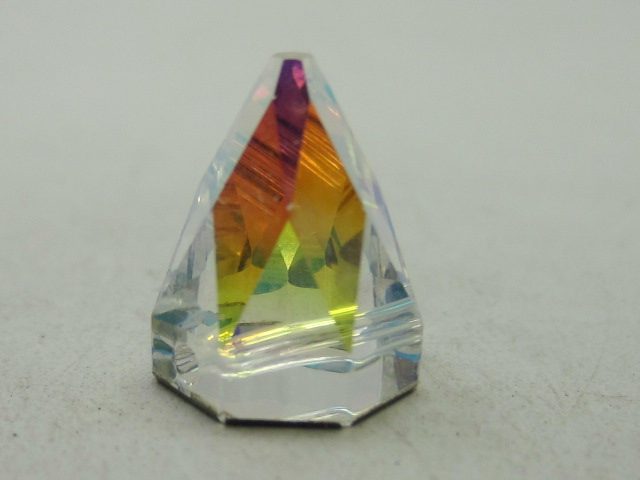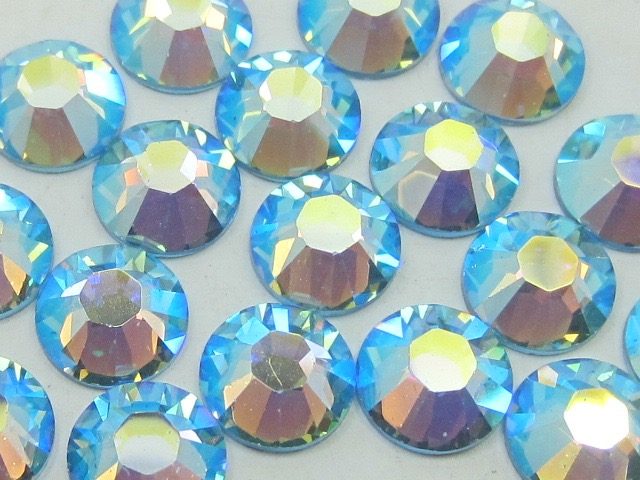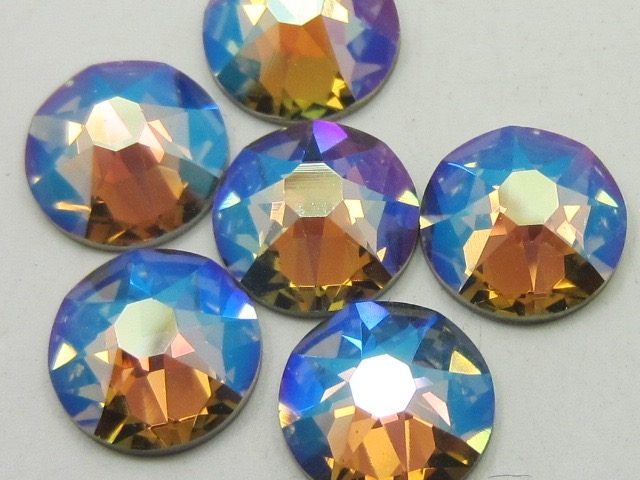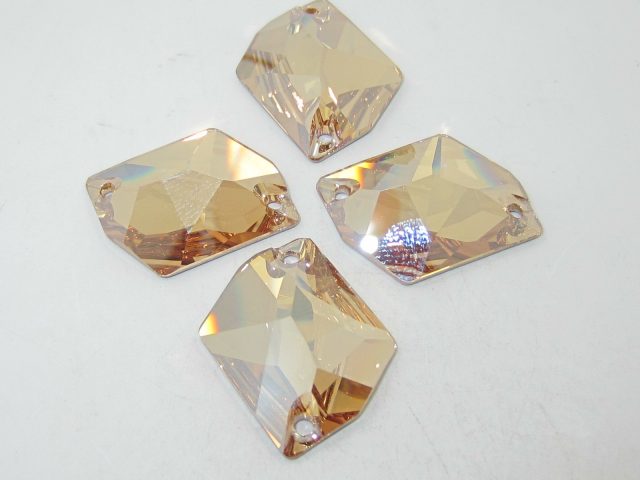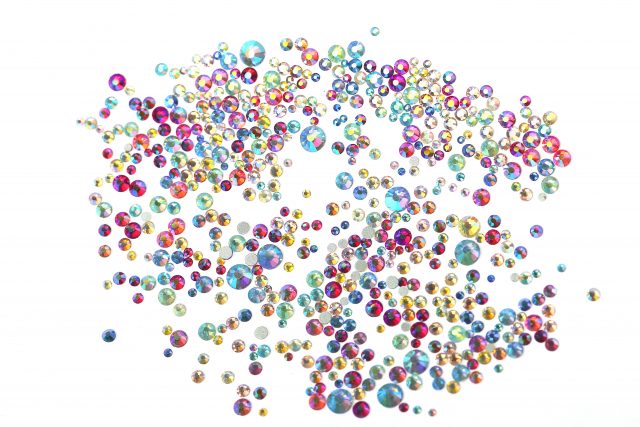 Have you been bitten by the sparkle bug? Rhinestone addiction is serious business! Whether you’re new to the rhinestone game or you’re an experienced “Bling Master”, we’ve prepared a crash course in rhinestone types and how you can use them to create the best projects possible (and the most glittery!).
Have you been bitten by the sparkle bug? Rhinestone addiction is serious business! Whether you’re new to the rhinestone game or you’re an experienced “Bling Master”, we’ve prepared a crash course in rhinestone types and how you can use them to create the best projects possible (and the most glittery!).
A (Mercifully Brief) History of Rhinestones
Centuries ago, rock crystals were harvested from the river Rhine in Austria and used in jewelry making. Since then, diamond-esque crystals have been produced from crystal glass, among other materials. Due to their river origins, the name “rhinestones” stuck, and folks have been using them to jazz up everything from Elvis’ jumpsuits to Michael Jackson’s glove ever since!
Why European?
Rhinestones can theoretically be made from many different materials, including acrylic, but the lower the material quality, the lower the quality of the rhinestones. Part of what makes a rhinestone so special is its sparkly nature, and lower quality materials create a duller stone.
European has been manufacturing rhinestones since the 19th century, when the company developed a technique for precision cutting. In comparison to other rhinestones, European uses higher quality lead crystal glass that has a higher lead content. This matters because the lead actually impact light refraction. In normal people speak, that just means the rhinestones are more sparkly.
Hotfix Rhinestones
Hotfix rhinestones (sometimes written as “hot fix”) refer to a type of rhinestone that has an adhesive back. The adhesive is heat-activated, which allows you to immediately adhere your rhinestones to the surface.
Hotfix rhinestones are best used in fabric applications and have a flat, foiled back. While hotfix stones are primarily meant for fabrics, you can use them as you would a regular flatback rhinestone by grabbing your trusty E-6000 glue.
There are several different tools you can use to apply hotfix rhinestones:
- Handheld applicator – The most convenient way to apply hotfix rhinestones, in our opinion, is to use a handheld applicator. These are used specifically for hotfix rhinestones and heat the adhesive while helping you hold the rhinestone steady. Some applicators come with additional tools such as brushes and tweezers to make your work easier. Applicators are relatively inexpensive and are easy to find
- Household iron – Believe it or not, a household iron you use for your clothes can actually be used to apply heat to hotfix rhinestones to make them stick. It’s not the ideal tool to use, but it will work in a pinch. Be prepared for putting in a little bit of effort.
- Industrial heat press – To get the best results for hotfix application, you’ll need to get your hands on some industrial equipment—a heat press, to be specific. You definitely don’t need to go out an purchase one if you’re not doing this a lot, but if rhinestones are becoming part of your business, it’s worth considering.
- Creative methods – While not recommended, it may be worth a mention that in an emergency rhinestone situation where you don’t own an iron, you could possibly even use an electric griddle! Maybe just invest in an iron…
Flatback Rhinestones
Flatback rhinestones refer to a huge class of rhinestones that includes hotfix rhinestones. As you might suspect, flatback rhinestones have a flat side—that’s the side that attaches to your designated project.
Flatbacked rhinestones that are not hotfix stones are applied using a specialized adhesive. Our favorite is E-6000 glue, but there are others on the market. Hotfix rhinestones, as mentioned above, are heat-activated.
One of the best reasons to use a flatback rhinestone is the versatility in terms of use. Because the back is flat, you can apply it to just about anything you can envision. Whether it’s a lampshade, your favorite pair of jeans, or a Mason jar, flatback rhinestones will get the job done.
In terms of projects, you really just need to consider the size of your rhinestones and the surface you’re applying it to. For example, if you have a round object, you might need to use smaller rhinestones to make it work.
Flatback rhinestones come in a huge assortment of shapes, sizes, and colors, and if you’re investing in high-quality Swarovski crystal (which you totally should!), you get an additional option labeled “AB.” AB refers to the unique Swarovski finish applied to rhinestones known as “Aurora Borealis,” which gives the rhinestone a rainbow-y, iridescent effect.
Sew-On Rhinestones
If you’re aware of Liberace, you’re aware of sew-on rhinestones. This style of rhinestone is made for sewing onto fabrics and is often more three-dimensional than a traditional flatback or hotfix rhinestone. This can add to the texture and appeal of a particular garment.
Sew-on rhinestones take a certain amount of skill to apply neatly. The rhinestone will have at least two premade holes that you will sew through to attach to the fabric. In a way it’s like sewing on a button, but you need to take care in choosing the right thread. There’s also an art to sewing in a way that’s secure but not overkill in terms of excess thread.
Needle
When you’re sewing on rhinestones, it’s important to use a beading needle—beading needles are thin and flexible, which will save you a lot of frustration down the line.
Thread
Choosing the right thread is just as important as choosing the right stones. You have a few options, but jewelry thread is recommended. It doesn’t kink and resists abrasion and fraying. Nylon thread generally works well, especially if it’s meant for beading. The lesson to take away from this is that if it’s good for beading, it’s probably good for rhinestones.
Silk thread is a more traditional option. It looks beautiful, but it also has a tendency to fray, which can make it more difficult to thread the needle. It can also snag easily on mounts, which are sometimes used with sew-on rhinestones.
Our inventory updates regularly—be sure to check back and find the perfect rhinestones for your next project. We’ve got a massive selection of sew-on, flatback, and hotfix rhinestones in dozens of colors, including AB stones! In addition, we sell glue, tools, and more.

